There were just four traditional materials in the world back in the day: lime, timber, stone and earth. Yielding such a rich repertoire of buildings is testimony to the ingenuity of mankind through recorded history and beyond. Lime is a smart material, perhaps the only one which has a life cycle of cradle-to-cradle. This material study undertaken by conservationists is now informing the ‘green’ sector wherein the focus has turned to the life cycle of materials and their embodied energy as important aspects for ecological ratings.
The active and growing interest in conservation of traditional buildings is also fueling research and technical advancement that can support the theoretical stance of minimum intervention without compromising on the longevity of the building. The knowledge system of traditional construction and material processes is however a pre-requisite for obtaining the desired results.
This essay presents one such experiential learning.
Historical and Architectural Lineage
Golcha Gardens is located at the head of the historical Ghat Ki Gunni, a unique ensemble of street-fronted pavilions with gardens and temples of varied sizes at the rear, culminating with Sisodia Rani Ka Bagh built by Maharaja Sawai Jai Singh II in 1710-1728 for his second queen, a Sisodia princess from Udaipur. The comparative study of layouts via satellite images of the two properties reveal many similarities in terms of response of the planners to the terrain, volumetric proportions of built and natural, treatment of the boundaries and retaining walls. The same royal, Maharaja Sawai Jai Singh II is also credited with being the founder of Jaipur – the planned city – now recognised as a World Heritage Site. Construction of the new capital began as early as 1725 although it was only in 1727 that the foundation stone was ceremonially laid. By 1733, Jaipur had officially replaced Amber the capital of the Kachawahas. All these linkages place the Golcha Gardens in a historically significant period of the early 18th century.
The property must have had another name that is lost in the annals of history. The royal patronage bequeathed this property and adjacent lands to the then Prime Minister of Jaipur, Shri Manek Chandji Golcha, in the early 19th century, as per verbal accounts. In those days it was primarily used as a get-away for relaxation.
In 1911, the family established it as a work place by constructing a factory (sheds) on the western end.
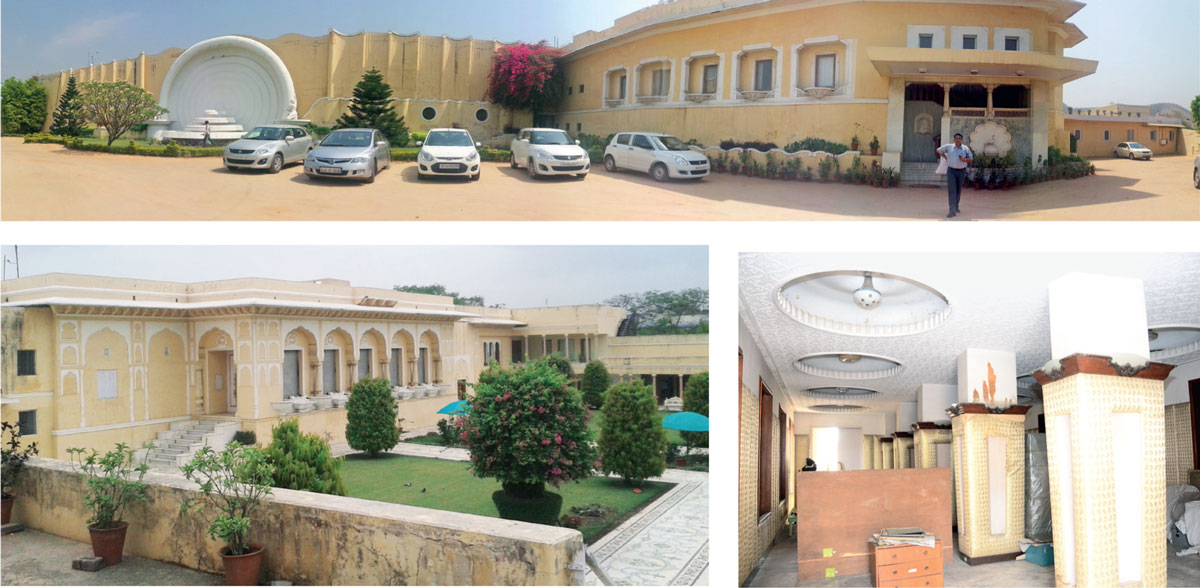
Bottom Left: 18th century Mahal post Indian Late Art Deco inspired interventions in the façade
Bottom Right: Indian Late Art Deco inspired embellished hall in the Mahal
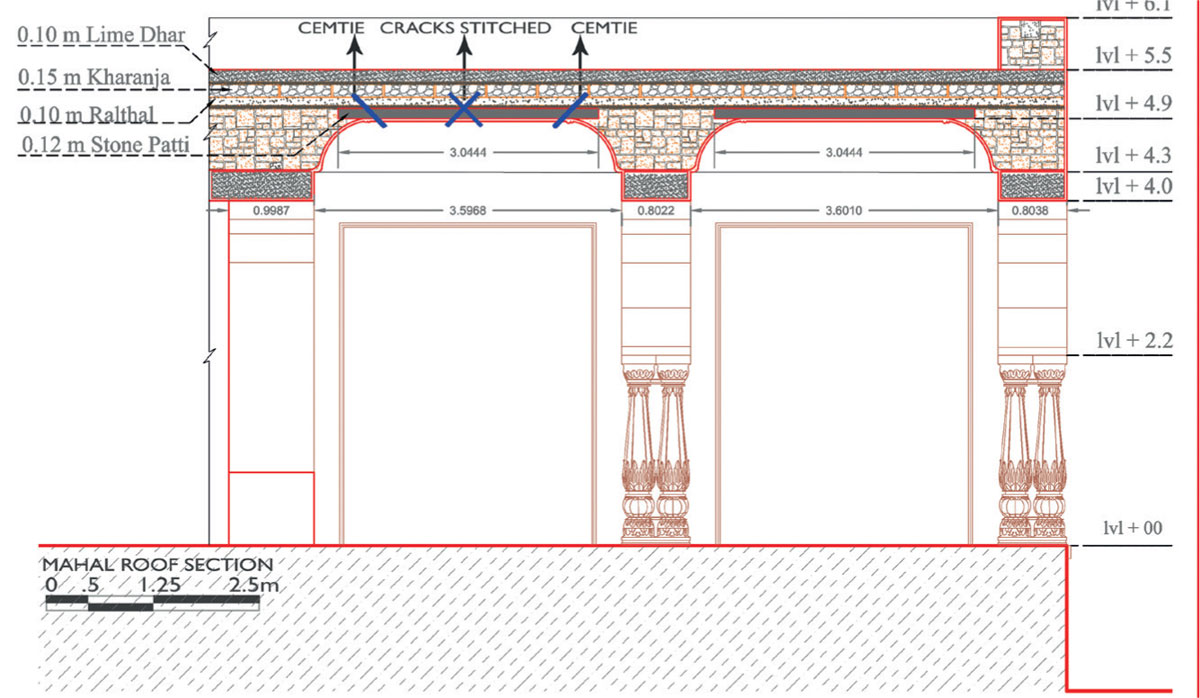
From 1940-1960 the property saw residential additions on the northern and southern ends of the original Mahal. Wedding pictures of 1958 (at the property) show the position of the road on the southern end, at a distance away from the boundary and also the entrance of the property changed from the ceremonial Eastern Gate to the west end, along with a change of use to the western half of the Mahal as the head office, perhaps owing to better linkage with Jaipur City via the M.I. Road. In the same era, the garden spaces too saw many improvements.
Like the city of its origin, the Golcha family of Jaipur too takes pride in its tradition of progress. Shri Raj Mal Golcha and his son Shri Sohan Mal Golcha braved all odds and travelled over inhospitable terrain in their quest to develop the family business. They also set a tradition of openness and embracing change, which was rare in the traditional societies of those times. This is well recorded in the built fabric of Golcha Gardens, West facades and the interior and exterior parts of the Mahal, built by the famous architect of the time, Shri W.M. Namjoshi of erstwhile Bombay, who also designed the Raj Mandir, a movie hall, in Art Modern Style (Streamline modern or late Art Deco). His creativity and the owners’ perception began a new era for the property. It was during this time that the interiors were also given importance.
In 2015, the present descendent and owner’s growing awareness of responsibility towards the inheritance led to the undertaking of a holistic understanding of the multiple building layers of the property.
Our reconnaissance survey mapped and recorded the site of its historical, material, architectural, natural values and multiple spaces and uses along with the timeline of interventions. The vulnerability factors were recorded. Preliminary mitigation actions in the form of a master plan were then prepared. Together, the two documents are a mindful attempt to ensure the continuum of the property with all its significance intact while also addressing the possibility of further development without adverse effect on the historic inheritance.
Amongst others, in this expansive property, the art deco interventions in the interiors of the eastern half of the Mahal – the oldest building layer on site – were questioned and rejected amidst the growing appreciation of the original early 18th century architectonics comprising marble columns adorned with exemplary craftsmanship supporting multi-foil arches with twin arcades holding the stone slab roofs given multi-layered lime renderings as was the Jaipur traditional practice. All of this was covered up in the Art Deco phase using timber frames and paneling with decorative fabric and plaster of paris decorative ceiling panels. AC ducting was also introduced and post careful dismantling revealed substantial loss of original decorative features on the double-barrel vaulted niches.
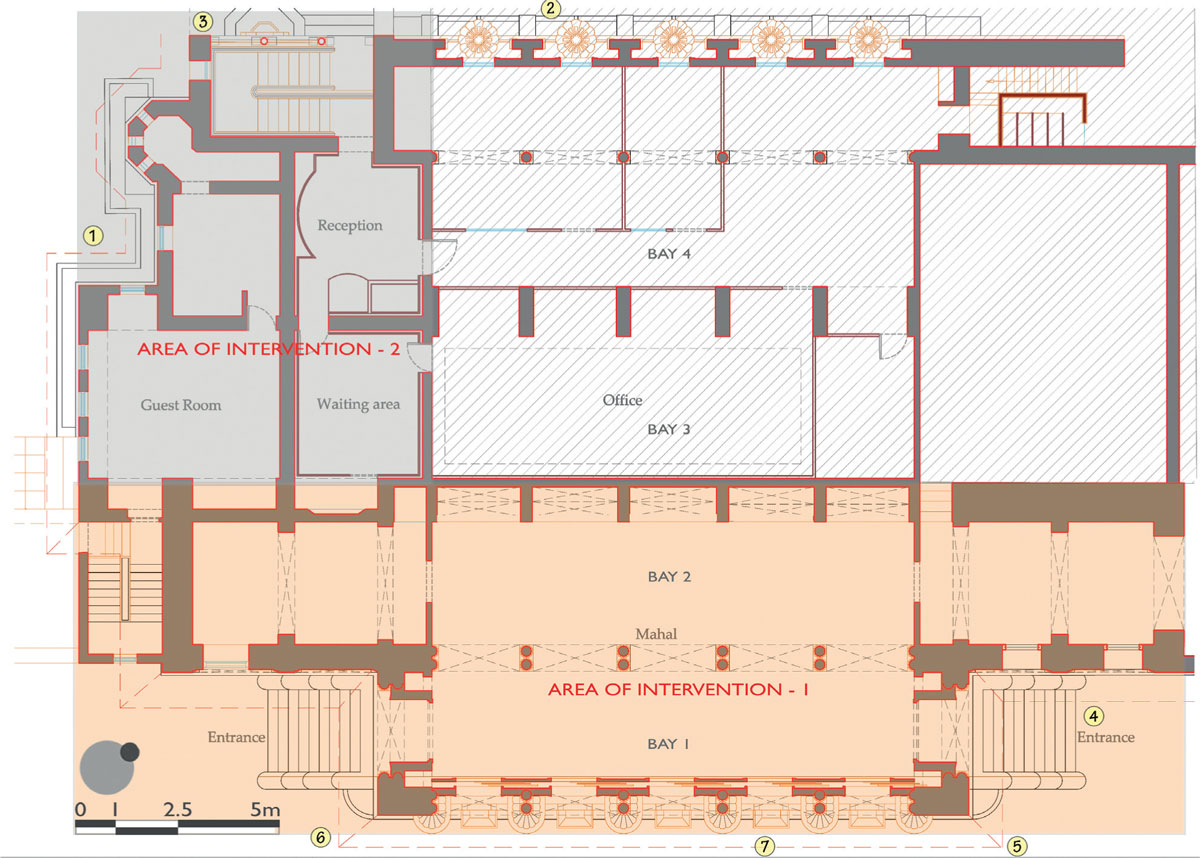
The vulnerability factors, besides the damage to the arched niches and arches, included more worrying cracks in the stone pattis or slabs. These cracks were at the centre of the bay where the steel rods were drilled into stones to support the AC ducts along with timber frame support systems for false ceiling panels.
Mitigating the cracks in the stone pattis became the priority. The first step was to ascertain the extent of damage. And to do so, the knowledge and experience of the Jaipur practice of construction came in handy.
Jaipur Traditional Stone Roof Construction System at the Mahal comprised four layers:
1. Stone Patti (stone slab) are simply supported (beams), laid flat on random stone masonry walls (about 3 feet thick) at the three sides of a rectangle while a twin marble column colonnade in the centre of the hall takes the load on either side. The façade too was adorned with the twin columns arcade, which was originally open as a pavilion. Each stone patti was approximately 12.5 feet long, 12 inches wide and 6 inches thick.
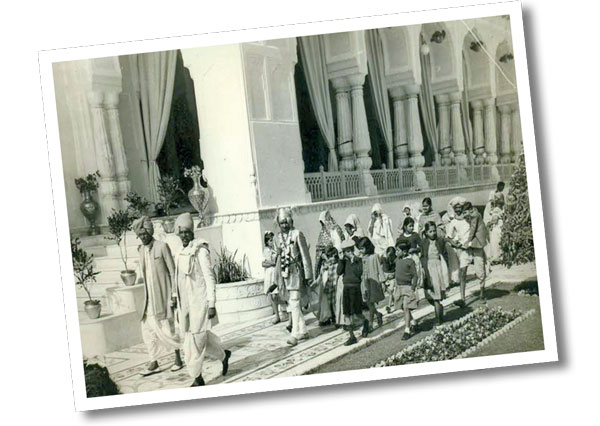
2. Ralthal is a leveling layer on the top surface of stone slabs achieved by laying stone chips flat in lime-sand (surkhi) mortar (1:2) and cured for a minimum of 7 days.
3. Kharanja is primarily a load distributing and tensile strengthening layer and is laid over Ralthal in an average thickness of 4 inches. It entails placing stone chips – no bigger than 3 inches wide and half an inch thick – on the edge to make a grid of maximum 16 by 16 inches on the levelled stone patti terrace. The square panels are then packed with stone chips laid in the form of circular or spiral rings in lime-sand mortar.
4.Dhar is a water proofing layer and may involve placing of inverted terracotta pots on the Kharanja as an air-gap provision device for heat transfer. The in-between gaps are filled with mortar and the surface is further layered in finishing mortar comprising one part of freshly slaked lime with two parts surkhi and two parts old lime mortar or sand. The cured surface is further layered with hemp as mesh added in-between. The surface is beaten with flat wooden battens to obtain the desired slopes. Then more mortar mix is layered and beaten rhythmically and gently using cane sticks for several days till all voids are removed. The beating results in consolidation of the mix bringing the excess water to the surface. The sprinkling of lime water and cane beating of the terracing is the curing ritual and results in water proofing of the terrace. The process continues for several weeks till the desired hardness of the terracing is achieved.
Rathal, Kharanza and Dhar together can form up to one foot or more thick terracing on top of the stone pattis.
The lime cycle that ensures the longevity of traditional buildings is based on the process of carbonation of the lime wherein the lime mortar absorbs carbon-dioxide from the air in the presence of water and becomes calcium carbonate. This theory of the carbonation process of more than two and half centuries was under examination at the Mahal post discovery of cracks in the stone pattis.
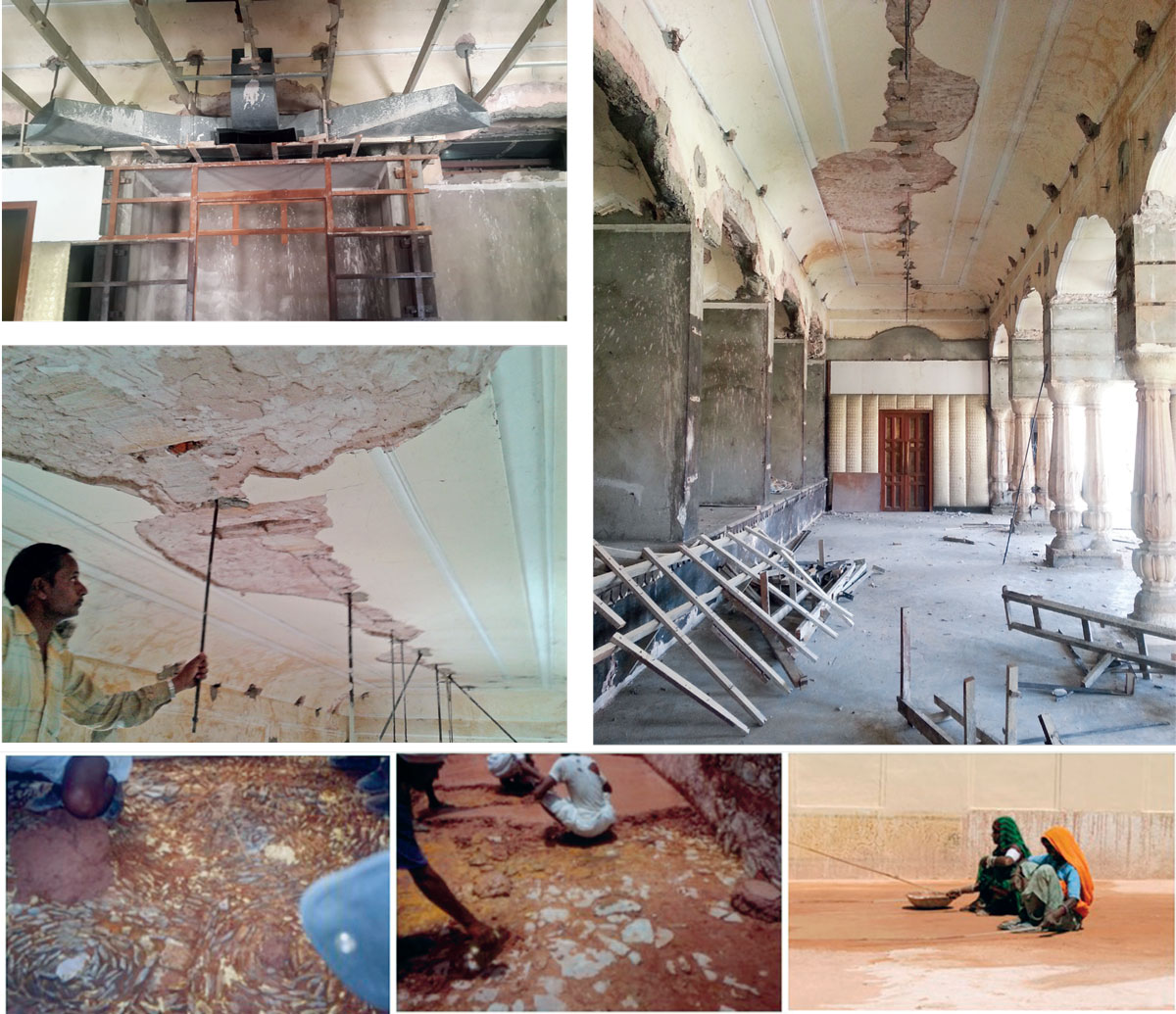
Middle Left: Iron rods drilled at the centre of the stone pattis to support ducts and false ceiling frames caused cracks
Top Right: Revealed marble colonnade and niches with high ceiling and broken arches post dismantling of all interventions
Bottom Left to Right: Traditional Terracing Jaipur Practice - Rathal, Kharanza and Dhar together can form upto one foot or more thick terracing on top of the stone pattis
Investigating the extent of damage
To find out the sanctity of the terracing, whether it was worth protecting and preserving, we decided to test it by ponding the terrace with water. All outlets were blocked and close to 4 inches of water was made to stand over the roof of the Mahal for 15 days. Not a single drop reached the underside of the stone patti. Losses in water level were monitored every morning and evening and it was found to be minimal and due to evaporation, which proved the terracing to be intact.
Deduction
We deduced that we needed to provide support/strength to the stone pattis, repair the cracks and limit our interventions to the first, or the lowermost layer, of the four-layered roofing slab.
Mitigating strategy
An in situ repair/consolidation solution was desirable. For this purpose, Helifix, a leading global brand in the field of restoration, strengthening/crack stitching of brick masonry/stone masonry bridges, buildings and monuments, was identified, contacted and engaged to undertake the work.
Evolving the process of repairs
The repair procedure was worked out in tandem with the Helifix UK and Helifix India teams. The first step was knowledge sharing of the traditional structural system. A process of exploration and testing was then devised. A stone slab similar in nature was found in the garden at the site and was then used for testing of all processes as envisaged. The stone slab was broken and using the Helifix crack bond it was joined together and then tested for its load carrying capacity. Having obtained a satisfactory result, it was used to fill the cracks of stone pattis, in situ. But this was not enough. Drilling on a sample stone patti and stitching with CemTies (reinforcement tie) was then tested. The treated and stitched stone patti was simply supported and loaded with cement bags and the load carrying capacity was tested again.
On obtaining favourable results, the following detailed methodology was thus devised and undertaken on site:
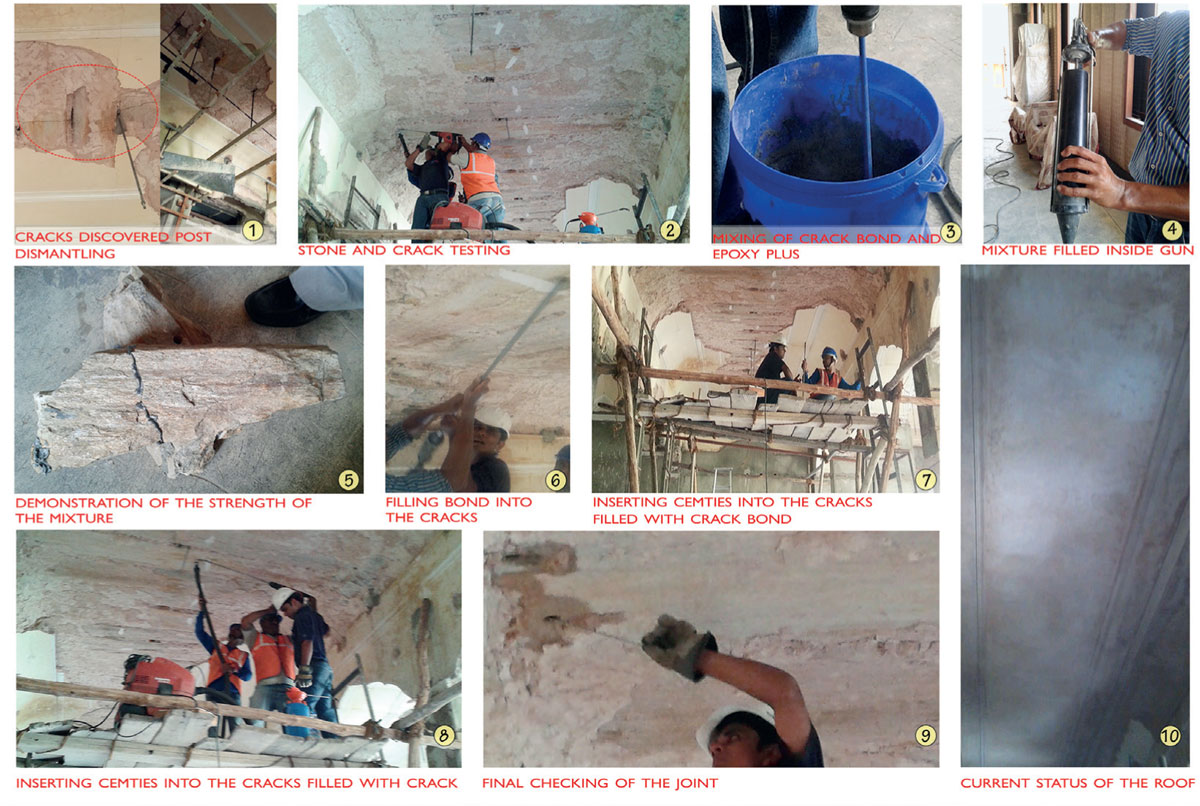
Methodology adopted for repairs and consolidation of the cracked stone pattis:
1. All the cracks were filled with crack bond, which is a special cementitious grout with low expansion, non-gassing and injectable with exceptional thixotropic properties and is used to bond stainless steel.
2. CemTies were inserted and cross stitched at the cracks to hold the stone together. Helifix CemTies is a stainless-steel bar with a diameter of 8 mm and proof stress of 1147N/mm2. These CemTies are flexible and allow the bars to follow contours and bend without fracturing or losing strength. A total of four such bars were used to cross-stitch the cracks along a width of 12 inches of the stone patti.
3. Furthermore, six CemTies were inserted at the ends of the stone patti: 3 on each side, in order to distribute the shear loads being transferred by stone pattis to the walls.
The chosen remedial measure was agreed upon because it proved to be minimally invasive while facilitating the possibility of complete restoration of the ceiling in original finish employing traditional materials and style without any compromises – visually or structurally.
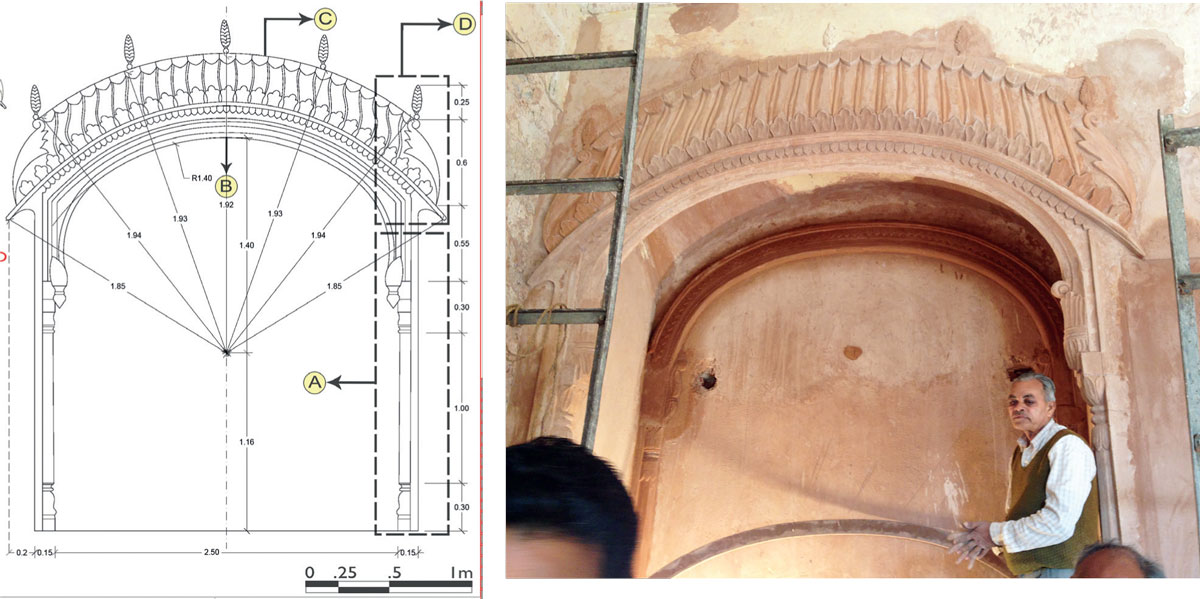
Right: Restoration of niches employing traditional materials and design
This repair methodology was adopted in consultation and participation of the owner, onsite project engineer, Helifix UK and the Helifix India execution team with the conservation consultant’s team at the helm. They were all jointly responsible at every stage of testing, evaluation and finally execution, over several months until all involved were fully convinced that this was the best course of action.
Post securing the roof, repairs and restoration of the broken niches, arches and walls to former sanctity of design sensibility were carefully undertaken using references found on the walls as visible clues. These were compared with nearby period buildings. A careful comparative study led to developing a design for the stucco plaster head mold and was painstakingly executed under expert supervision of senior master-craftsmen, employing traditional materials prepared following all traditional tech-protocols.
Insights
The exemplary commitment of the owners towards their inheritance paved the way for adoption of technological advancement in repair and consolidation techniques from the 21st century that were used to rescue the early 18th century palace. It is a perfect example of symbiosis of modern science and decoding of traditional technology.
As a technical system, the traditional terracing system comprising three layers deserves as much merit as it became a monolithic slab over two and a half centuries of the carbonation cycle and thus protected the stone pattis when they were damaged in the mid-20th century. While exposure of conservation consultant to the technological advancement globally may have been a decisive advantage, the technology per se had to be imported.
India, with its vast repertoire of built heritage, urgently needs to invest in furthering technological research and development that can assist in recording, investigating and in conservation of numerous marvels that have survived centuries.
Ahmedabad and Jaipur, recognised as world heritage cities, and are being showcased by the Government of India. The government departments both at national and state levels are entrusted with caretaking and continue to work within the outdated framework of the public works department which is neither sensitised nor appropriately informed.
While scientific enquiry for enhanced understanding of the traditional technology has found a footing in some of the institutes of civil engineering, it remains selective and nascent. Modern building material expos have become a norm and are held in most of the metros every year. It is also time for India to invest in a ‘Conservation Technology Fair’ showcasing the global tech, the advancement of investigating and recording technologies along with mitigating strategies to inform all its departments in particular and general public at large.
Cultural continuum requires investment and the creation of the conservation industry to empower India to meet the sustainable development goals is vital as all existing buildings are carbon neutral and putting many of them to appropriate use is a sensible way forward.

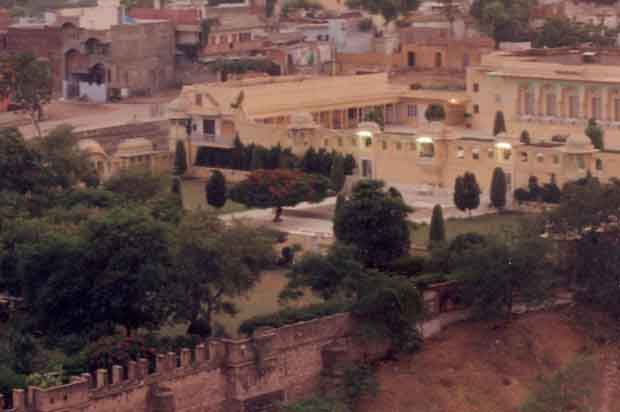

Comments (0)